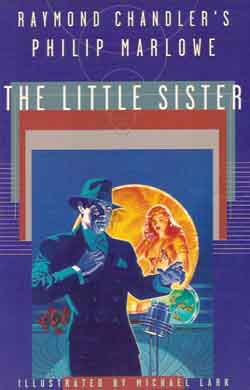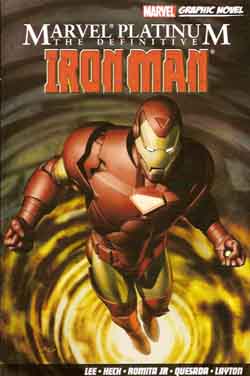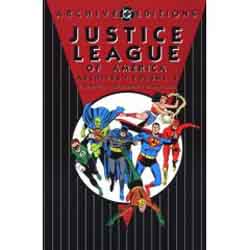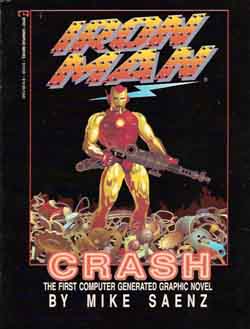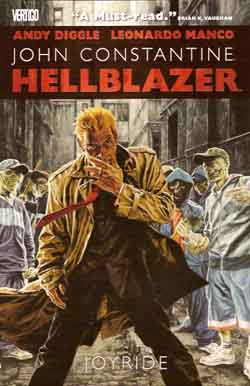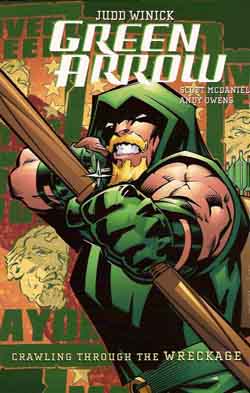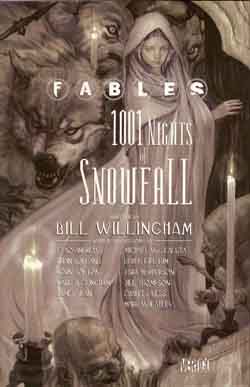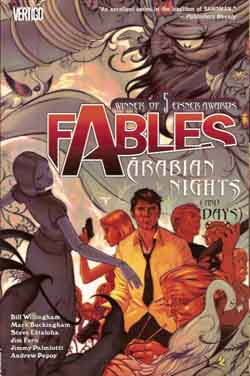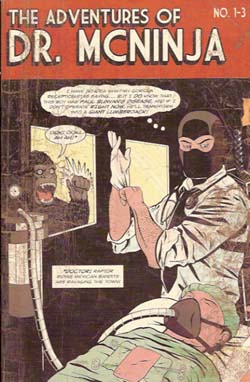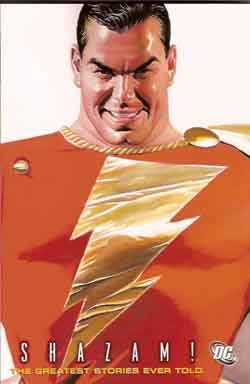
By various (DC Comics)
ISBN: 978-1-84576-841-6
Hard on the heels of the superb Shazam!: Monster Society of Evil collection (ISBN: 978-1-84576-389-3) comes this welcome addition to DC’s Greatest Stories… line, featuring some wonderful moments from the stellar, if chequered career of the World’s Mightiest Mortal. First seen in the February 1940 issue of Whiz Comics (#2 – there was no #1) to cash in on the sales phenomenon of Superman, he was the brainchild of writer/editor Bill Parker and young illustrator Charles Clarence Beck.
‘Introducing Captain Marvel’, drawn in style reminiscent of early Hergé, saw homeless orphan newsboy Billy Batson lured into an abandoned subway tunnel to a meeting with the millennia old wizard Shazam. At the end of a long life fighting evil, the white-bearded figure grants the lad the power of six gods and heroes (Solomon, Hercules, Atlas, Zeus, Achilles and Mercury) and tells him to carry on the good fight. In thirteen delightfully clean and simple pages Billy gets his powers, has his secret origin revealed (he’s heir to a fortune embezzled by his crooked uncle Ebenezer) gets a job as a radio reporter and defeats the mad scheme of Doctor Thaddeus Bodog Sivana who is holding the airwaves of America hostage.
Originally dispensing the sort of summary justice as his contemporaries, the character soon distanced himself from the pack – Man of Steel included – by an increasingly light, surreal and comedic touch, which made Captain Marvel (Billy’s alter ego could beat everybody but copyright lawyers; during his years of inactivity the trademarked name passed to a number of other publishers before settling at Marvel Comics) the best-selling comics character in America. For a period Captain Marvel Adventures was published twice a month, and he was the star in a number of other titles too.
In the formative years however, there was actually a scramble to fill pages. From Captain Marvel Adventures #1 (1941) comes an untitled drama of alien slavers produced in a bit of a hurry by Golden Age Dream-Team Joe Simon and Jack Kirby. It’s fair to say that this rarity was included for its name-value alone, but the third tale, ‘The Trio of Terror’ (The Marvel Family #21, 1948), is prime stuff from Beck and the brilliant and prolific writer Otto Binder, full of sly whimsy as three demons escape the netherworld to plague ours.
Many of the storytelling innovations we find commonplace were invented by the creative folk at Fawcett – the original publisher’s of Captain Marvel. From Captain Marvel Adventures #137 (1952) comes ‘King Kull and the Seven Deadly Sins’ by Binder and Beck, wherein the beast king from a pre-human civilisation frees the embodiments of Man’s greatest enemies to plague the planet. These are wholesome tales for the entire family however, so don’t worry – “Lust†has become “Injustice†and “Wrath†is “Hatredâ€, here.
There are two yarns from the good Captain’s final year of Golden Age publication. DC, in their original identity of National Periodical Publications, had filed suit against Fawcett for copyright infringement as soon as Whiz Comics #2 was released, and the companies had been slugging it out ever since. In 1953, with the sales of superhero comics decimated by changing tastes, Captain Marvel’s publishers decided to capitulate.
DC eventually acquired all rights, titles and properties to the characters. But that last year saw some of the best tales in the entire run, represented here by the wonderfully surreal ‘Captain Marvel Battles the World’ (Captain Marvel Adventures #148, September1952, by Binder and Beck), and ‘The Primate Plot’ (The Marvel Family #85, July 1953), a dramatic and very funny precursor to the movie Planet of the Apes, by Binder and Kurt Schaffenberger. Beck would return to commercial and magazine illustration, but Binder and Schaffenberger soon joined the victorious opposition, becoming key Superman creators of the next few decades.
In 1973 DC decided to revive the Captain for a new generation and see if his unique charm would work another sales miracle during one of comics’ periodic downturns. From the comicbook re-titled, for those pesky copyright reasons, Shazam!, the tale that bought him back was written by Denny O’Neil and illustrated by the wonderful C.C. Beck.
‘In the Beginning… /The World’s Wickedest Plan’ (from Shazam! #1, February 1973) retold the origin and explained that the Captain, his super-powered family and all the supporting cast (there’s a very useful seating chart-cum-biography page provided for your perusal) had been trapped in suspended animation for twenty years by the invidious Sivana Family who had subsequently been trapped in their own Suspendium device.
The sales and fan rivalry of the Man of Steel and The Big Red Cheese (Sivana’s pet name for his stout-hearted nemesis) had endured for decades and in 1974 Julius Schwartz took full advantage by having the two finally – if notionally – meet. Superman #276 featured ‘Make Way for Captain Thunder’ by Elliot S! Maggin, Curt Swan and Bob Oksner, a trans-dimensional tussle to delight ten-year-olds of all ages. Incidentally, Captain Thunder was one of the titles considered in 1940 before Fawcett went with the Marvel name.
Beck was legendarily unhappy with the quality of stories he was being given to draw and soon left the series. One of his assistants and stable-mates from the Fawcett days had been a Superman Family mainstay for nearly twenty years and smoothly fitted into the vacated lead-artist position. Kurt Schaffenberger was delighted to again be drawing one of his all-time favourite assignments again, and his shining run is represented here by #14’s ‘The Evil Return of the Monster Society’ scripted by Denny O’Neil in 1974.
Captain Marvel’s blend of charm, drama and whimsy made and remade many fans, even prompting a live action TV series, but never enough to keep the series going in such economically trying times. Despite its cancellation however, the series persevered in back-up slots in other magazines and the character still made the occasional bombastic guest-appearance such as 1984’s DC Comics Presents Annual #3.
‘With One Magic Word’ saw Sivana steal the mystic lightning that empowered Billy Batson, leading to a Battle Royale with not just the Marvel Family but also the Supermen of both Earth’s 1 and 2 (this was mere months before Crisis on Infinite Earths lumped all these heroes onto one terribly beleaguered and crowded world). This cracking 40 page romp was plotted by long-time fan Roy Thomas, written by Joey Cavalieri and illustrated by the fabulous Gil Kane.
Now fully part of the DC universe Captain Marvel popped up everywhere. He was even part of Justice League International for awhile. From L.E.G.I.O.N ’91 #31 (1991), by Alan Grant and Barry Kitson, came the wickedly funny slugfest ‘Where Dreams End’, as the big guy has to try and reason with a drunk and hostile Lobo, and when he once more had his own series, spinning off from the superb original graphic novel The Power of Shazam! (ISBN: 978-1-56389-153-3), a new high-point of quality entertainment was achieved – and sustained – by Jerry Ordway, Peter Krause and Dick Giordano.
‘Yeah – This is a Face Only a Mother Could Love…’ (from The Power of Shazam! #33, 1997) is a powerful and poignant treatment of intolerance and the collateral damage of superhero encounters as Billy tries to help a school-friend hideously scarred by his arch-foe the Arson Fiend, and is possibly the best and least known story in the book.
This lovely compilation ends with a zesty delight from the all-ages Adventures in the DC Universe comicbook (#15, 1998). Steve Vance, John Delaney and Ron Boyd created a testing time for Billy when Zeus decided to see if Billy was actually worthy of his power in ‘Out of a Dark Cloud’.
Captain Marvel is a genuine icon of American comic history and a brilliantly conceived superhero for all ages. This collection, which only scratches the surface of the canon of delights produced over the years, is a perfect introduction to the world of comics and one that will appeal to readers of any age and temperament.
© 1940, 1941, 1948, 1952, 1953, 1973, 1974, 1984, 1991, 1997, 1998, 2008, DC Comics. All Rights Reserved.

